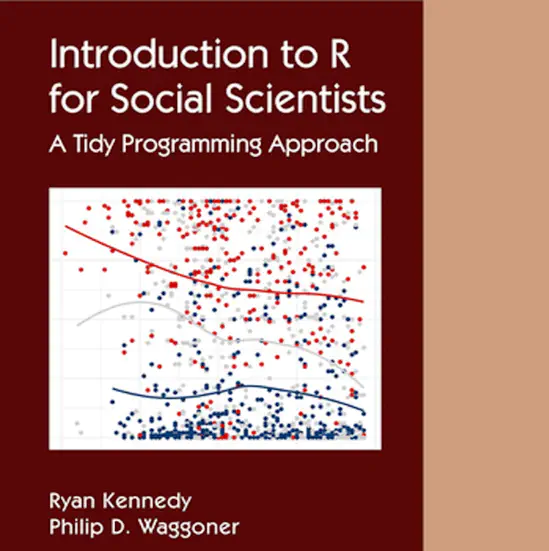Introduction to R for Social Scientists (I2RSS)
Book review
 Book cover, CRC Press
Book cover, CRC PressAcclamations for I2RSS
From my training (Ph.D. in sociology) but also from my different professorship on educational sciences, I was pleased finally to see a new R introduction especially directed at social scientists. The book title “Introduction to R for Social Scientists: A Tidy Programming Approach” (abbreviated I2RSS) was promising for me for two reasons.
Authors experienced in political, social & dats science
The book is written by Ryan Kennedy and Philip Waggoner, two prestigious scientists involved in political and social research. Whereas Ryan has an astonishing career in political science, is Philip exceptionally experienced at an academic level in computational social science and data science. Philip is also a member of easystats (a software group that tends to an ecosystem of packages making statistics in R easy).
Promoting the modern tidyverse approach
The book features the tidyverse approach a modern collection of R packages that share an underlying design philosophy, grammar, and data structures.
Real data, results discussed and gentle dialog with reader
Without doubts, the book has several other merits: It uses real data sets, e.g., from the American National Election Studies (ANES) and teaches data management, visualizations, exploratory data analysis (EDA), and statistical modeling not in an abstract way, but also discusses the exciting results with their data sets. It talks to the reader in a very sympathetic and comforting way to master the (still very) steep learning curve for R beginners.
Some drawbacks and failures
But unfortunately, there are also two significant drawbacks to this introduction:
Educational inconsistencies
The book has several weaknesses from an educational point of view:
- With some exceptions (data classes, data structures, and the map function from the purrr package is the chapter on “Essential programming,” in my personal view to advanced for R beginners, especially for people from the social sciences with no programming background.
- Comparing the same results with base R and tidyverse code may be interesting for intermediate users. Still, it is a waste of time and complicates things for beginners. It is also misusing the sparse place in the book, which has only 198 pages.
- The book uses R scripts and does not feature Rmd files. This is strange as literary programming is an essential step for reproducibility, and RMarkdown also facilitates interactive use of the program code.
- Sometimes, the results of the code chunks are missings (e.g., graphs, tables, or reports). The explaining text under the code is, therefore, abstract. There are also some link errors, providing an URL starting with “www” where the referring webpage does not need/accept this addition.
These above weaknesses result in the deduction of one of the five stars.
Not a role model for Open Science
The second star deduction is motivated by missing teaching modern scientific behavior for early career researchers (ECRs). This shortcoming includes not using R Markdown and GitHub. I think that after the publication of Happy Git, there is no excuse anymore to teach Git and GitHub (or similar systems) even for R beginners. Another big mistake is not using the open-access politics of the bookdown.org infrastructure for the online version of the book.
In the book, the authors promote the friendliness and importance of the R community several times. They even mention that the book was initially written with the help of the bookdown package (page 2). So why not supply a role model for R beginners and young researchers?